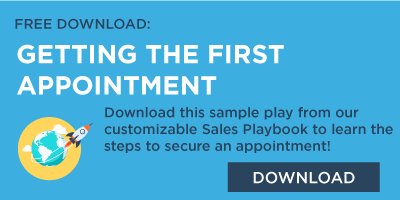 Early on in my sales career, there was a prospect that I was determined to close. Everyone on my sales team had tried to gain access to this decision maker, and some had gotten as far a conversation, but it never evolved from there. When my manager suggested I try to approach this target prospect, I eagerly accepted the challenge. In my head, I confidently thought, “I can make this happen.” Ha!
Early on in my sales career, there was a prospect that I was determined to close. Everyone on my sales team had tried to gain access to this decision maker, and some had gotten as far a conversation, but it never evolved from there. When my manager suggested I try to approach this target prospect, I eagerly accepted the challenge. In my head, I confidently thought, “I can make this happen.” Ha!
I spent months calling, dropping by, leaving voicemails, and sending emails. I never managed to get through to anyone, but I remained persistent and didn’t give up until one day I was told not so politely to go away.
Often during my career, I have reflected on that cringe-worthy experience. I had been persistent (outright annoying), and at the time, I had truly thought that persistence alone should get me in the door. As I began to develop and grow as a salesperson, I began to see the power of not just being persistent, but being persistent with a purpose. I learned the importance of earning trust and offering value to the prospect. Unfortunately, I had to experience some tough lessons before I got to this point.
Let me spare you some of the pain that I went through early on and offer some tips that will help you show prospects that you can and will be a trusted and valued partner.
When reaching out to prospects, think about these important factors:
Empathy: I can understand and relate to your problem.
- WHY: You demonstrate empathy so that it’s clear that you know where the prospect is coming from. Doing this helps the prospect believe that connecting with you won’t be a waste of their time.
- HOW: You can demonstrate empathy by sharing an insight or information of interest. You may share an observation related to their social media presence, stating the upcoming peak season for their business category, or perhaps a challenge related to cash flow or a legal issue.
Expertise: I’ve solved problems similar to ones you are having.
- WHY: Let the prospect get a glimpse into your knowledge and the resources you use to help customers. Doing this gives the prospect a reason to believe you might be able to offer them value.
- HOW: Share an insight or industry information. In this case, look for something that illustrates your knowledge of how customers engage with your prospect. To be effective in this area, you need to continuously educate yourself and remain relevant. Don’t overwhelm yourself though—stick to a few trade publications or sources.
- Showcase an example of how you have helped your customers—connected to the insights on their business that you’ve shared.
Problem-Solving: I can develop a solution to your problem.
- WHY: You demonstrate problem-solving so that the prospect will lean in and imagine how you might be able to help them with their problems.
- HOW: Share great solutions you have developed for other clients. Focus as much on the process you followed as the results you were able to help a customer achieve.
Persistence with a purpose is different than being "annoying." When reaching out to prospects, ensure empathy, expertise, and problem-solving are at the forefront of the communication to avoid being pesky and to see that your persistence pays off.



